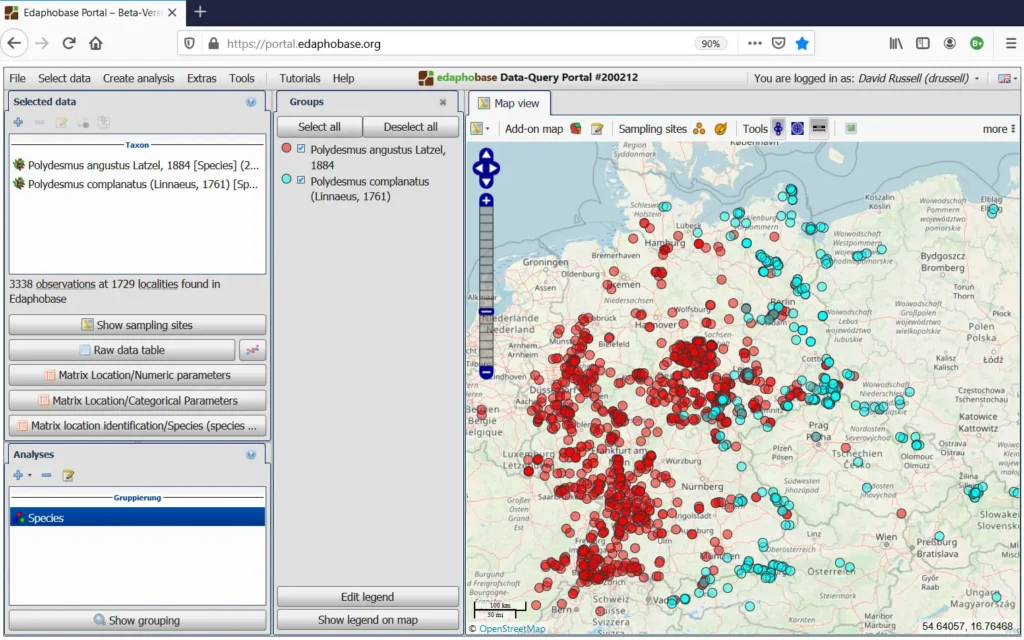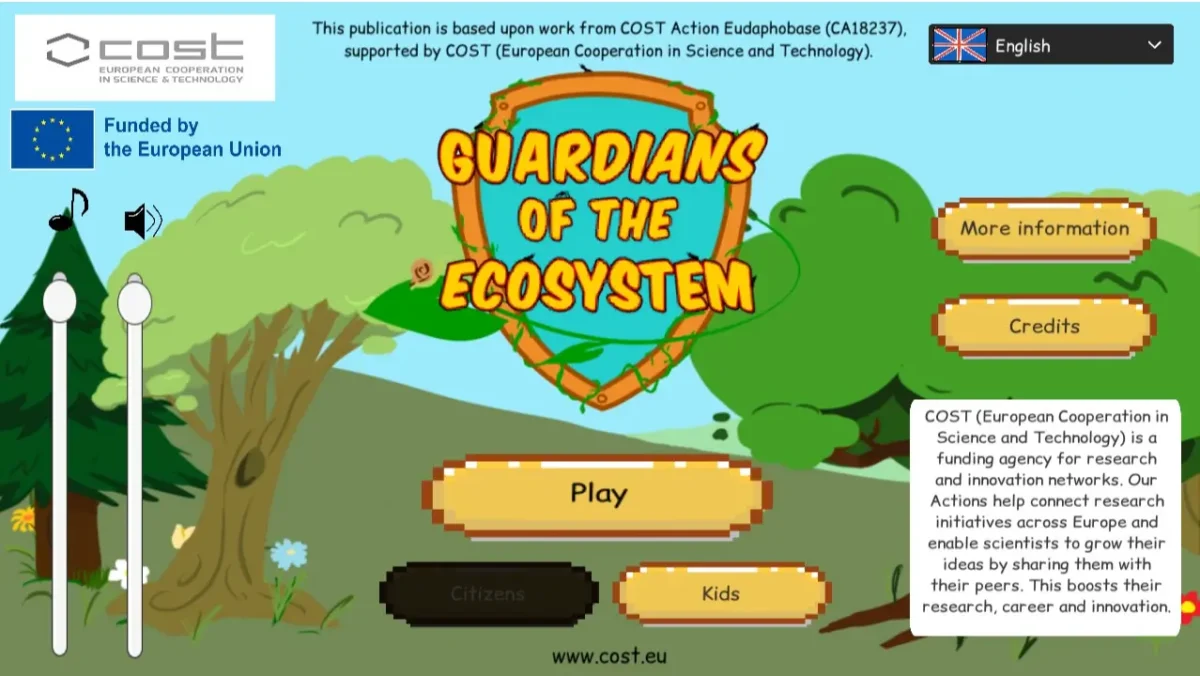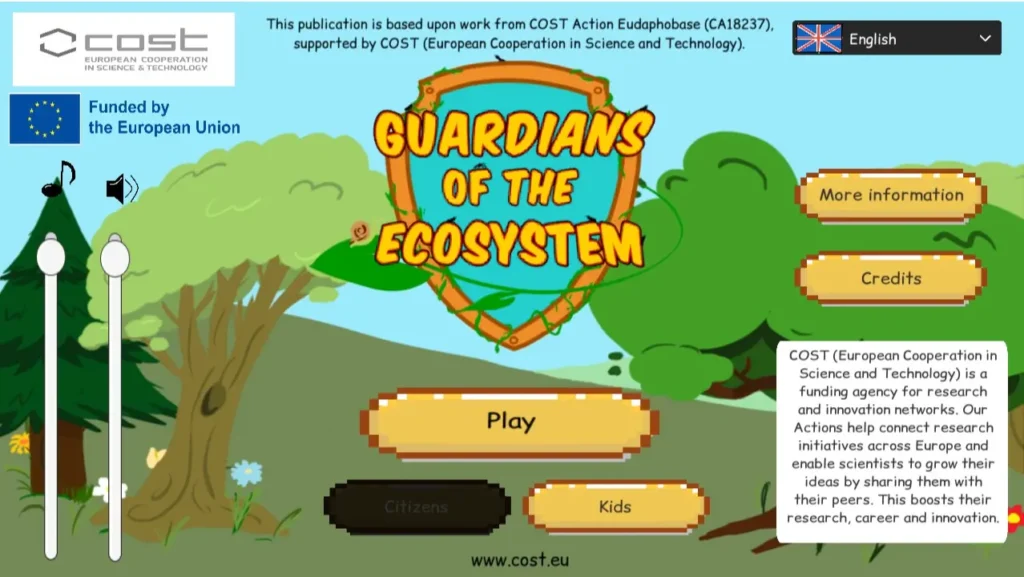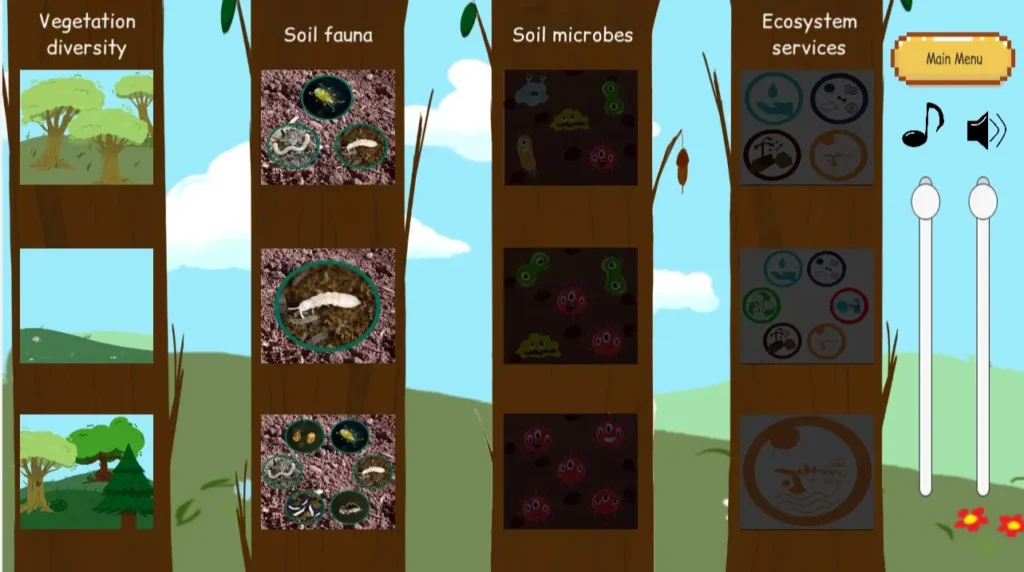Introducing Guardians of the Ecosystem
Blogs are written by COST Actions
European Soil-Biology Data Warehouse for Soil Protection (EUdaphobase) is a COST Action working to develop an open Europe-wide soil biodiversity data infrastructure that can be used for understanding, protecting and sustainably managing soils, their biodiversity and functions. It aims to promote the understanding, protecting and sustainably managing soils, their biodiversity and functions.
As science frequently lose its connection to society and its needs, citizens do not fully understand a scientist´s goals. Obstacles such as the lack of a common language between scientists and society, and fast development and progress in science in general, and soil ecology in particular, has increased the social concern regarding the role that science play in everyday life.
To bridge this gap, and within the objectives of EUdaphobase, we decided to build an interactive video game ‘Guardians of the Ecosystem’ for adults and children aimed at increasing awareness of the general public for soils, soil biodiversity and soil ecosystem services.
Players have the opportunity to learn how more diverse ecosystems hold more types of soil fauna and richer microbial communities, which is better for humans. We hope this game will raise awareness on the relevance of protecting biodiversity at different levels (vegetation, soil fauna, and soil microbes) in order to preserve the ecosystem functioning and services that we obtain from them, and on which our well-being relies on. By doing so, this activity will increase trust, acceptance, and ownership of research, as well as a positive perception of science by the public.
How to play
Players connect pictures over 4 columns which show 3 increasing degrees of complexity for (1) plants ecosystem diversity, (2) soil fauna, (3) soil microbial community and (4) ecosystem services. Players will learn that more diverse ecosystems in terms of plants tend to hold more types of soil fauna and richer microbial communities, which provide more goods for human profit (ecosystem services).
Soil hosts a quarter of terrestrial biodiversity and support numerous functions and services to society. However, they are generally overlooked by citizens and therefore poorly understood. We urgently need reconsideration and integration of soils in the social understanding of a healthy biodiversity. Our videogame illustrates how the more different species there are in an ecosystem, in other words, the more biodiverse it is, the better it is going to work. A higher number of tree species, soil fauna (such as earthworms, springtails, mites and nematodes), soil microbes or any other kind of living beings are going to foster a better functioning of the whole system. This ecosystem benefits society throughout the production food, medicines, wood, minerals… recreation areas, weather control, plague control, nutrient recycling and decomposition of organic matter and the production of clean water.
Working with younger audiences
Aware of the relevance of reaching the general public in innovative and targeted ways, we made an effort to use new technology and methods of science communication. Interactive online material has proved to be an ideal way to disseminate among younger citizens. We aimed at segregating the target audience between adults and children to properly reach both age groups. We first developed the texts aimed for adults and then adapted it to children by simplifying terms and concepts to make them more understandable for our young audience. Also in the spirit of being as inclusive as possible, the videogame can be played in 5 different languages (English, Spanish, French, German and Greek).
Test your knowledge
We officially launched Guardians of the Ecosystem on the EUdaphobase website in January 2023. It has already been promoted during Ecology Day (13-17 September 2022), the European Researchers ‘Night (30 September 2022) and the International Day of Girls and Women in Science (11 February 2023). It is our wish that it becomes a frequently used learning resource for outreach research activities aimed for both adults and children all over the world.
Author
Dr Lourdes Morillas Viñuales, University of Seville, works in the area of terrestrial ecology with emphasis on soil science and nutrient cycling. She is the Grant Awarding Coordinator EUdaphobase and worked as the Game Designer and Scientific Advisor of Guardians of the Ecosystem.
Additional information
EUdaphobase aims to integrate and make European soil-biodiversity data available for re-use by scientists, stakeholders like government agencies and the general public for assessment and analysis of soil biodiversity. The goal is to provide a sustainable, systematic soil biodiversity inventory of uniform data to forward the understanding of soil biodiversity and sustainable use of soil in Europe and globally.

The Action is expanding the data infrastructure Edaphobase; a data warehouse (more than another database) due to its integration of heterogeneous data from various sources (literature data, ‘raw’ project data, museum collections), standardising and structuring it in a homogenous form, and making all data available together for common re-use.
The Action has already: improved the user interface; developed a data policy and data-sharing agreement; standardised all nomenclatures and data-fields in European consensus; uploaded thousands of soil-biodiversity data records from across Europe with a focus on Eastern Europe, which has been neglected in previous initiatives.
Next steps will include: establishing an international quality-control review board, which will review data submissions beyond the Action’s duration; preparing an ‘Atlas of European Soil Fauna‘ based on previous and ongoing data collation efforts; standardising species’ character traits, in order to aggregate species-specific occurrence data into functional groups and relate these to soil functions; linking Edaphobase to other international databases like BETSI, EcoTaxonomy and FungalTraits; and approaching European stakeholders to assess their soil-biodiversity assessment needs.


